Michael Messer's history of the resonator
Steel got it
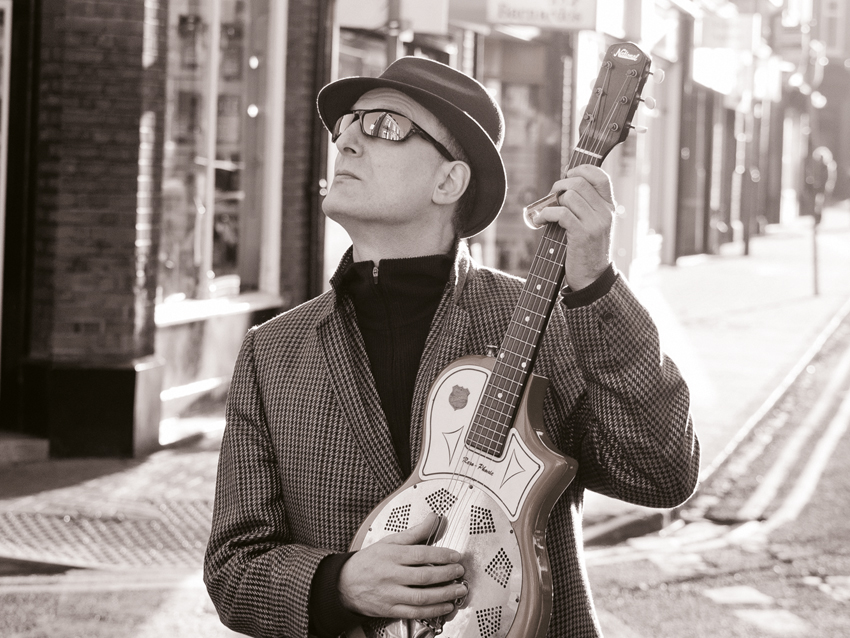
Michael Messer's history of the resonator
Slide guitarist Michael Messer is one of Britain’s foremost acoustic blues artists, but he’s also an expert on the history of resonator guitars.
Here he takes us on a journey through the evolution of the loudest acoustic instruments ever built, whose shining, engraved bodies and bold, heart-piercing tone is indelibly associated with slide...
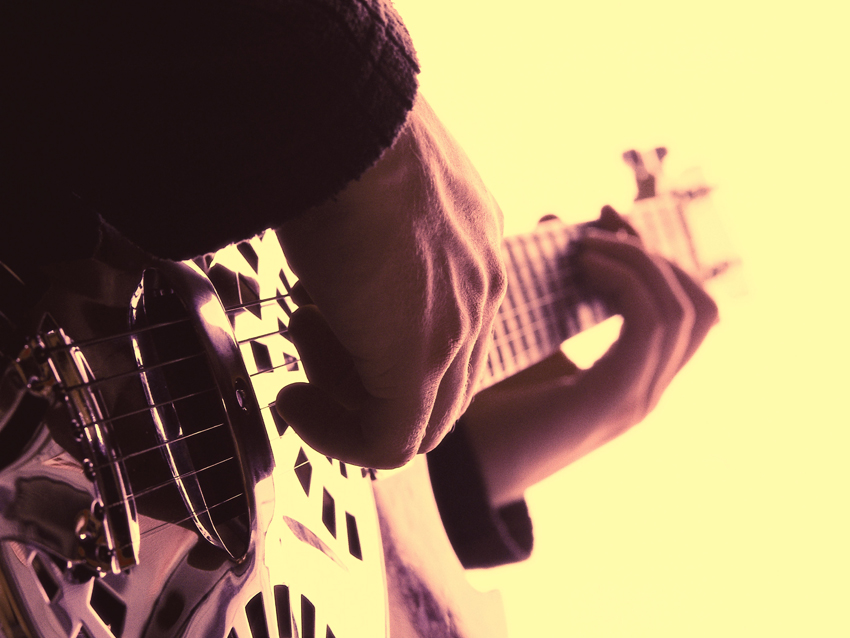
Creation and tone differences
Why were resonator guitars created in the first place?
“They were created because it was in the days before amplification, and even, really, before the days of PA systems. So acoustic guitars were having trouble being heard.
“The fashionable music at the time was Hawaiian music. It was kind of like the hit music all over America, and instrument makers such as Weissenborn were trying to make Hawaiian guitars louder by making instruments with hollow necks and great big bodies. Then, in 1926, John Dopyera invented the first resonator guitar, a Tricone, which was for playing Hawaiian lap-steel guitar on. It went into production in 1927.
“There were only square-neck instruments to begin with, and that was all they did. Then they went into round-neck Tricones, like regular guitars, because people wanted the volume. During those first two years, they developed ukuleles, mandolins, and single-cone guitars. Single-cone guitars came in 1929, in fact.”
What are the tonal differences between the Tricone and single-cone designs?
“The Tricone is the sweetest: it’s the ultimate acoustic slide guitar. The three cones give it a tone and a resonance that no other instrument has. Nothing else produces harmonics and tones like that: it’s probably nearer to an electric guitar than it is to an acoustic. A single cone is louder – more attack, more power, less sustained.”
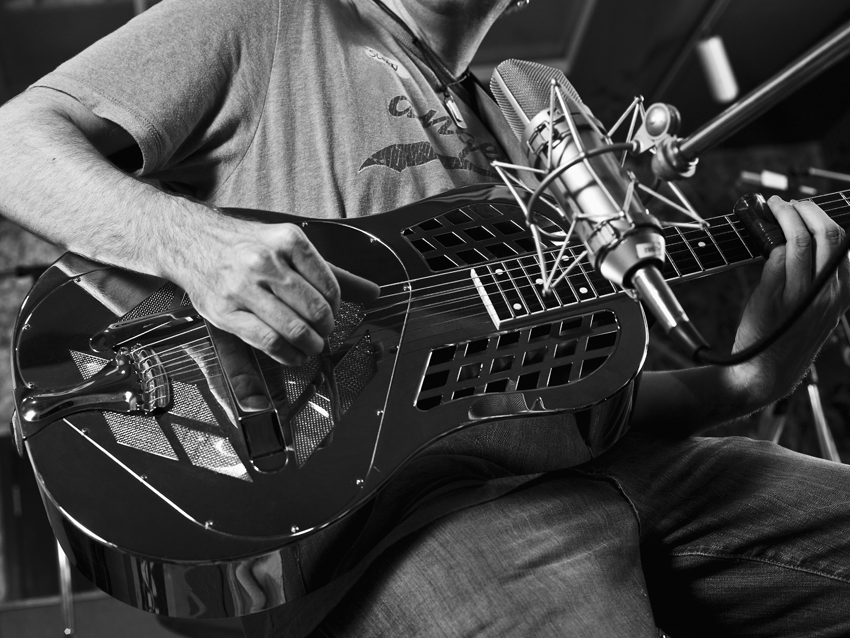
Dobro and National
How did Tricones and single-cone designs differ in terms of construction?
“In Tricones, there were two body materials: German silver [an alloy of copper, zinc and nickel] and then they went to brass. German silver’s pretty hard to work with, and it’s expensive. So the ‘golden period’ of Tricones was German silver, but later models were made of brass – and most modern Tricones are made of brass.
“In single-cones, you’ve got four materials. You’ve got steel, brass, wood and German silver. German silver was the top of the range, but most of the shiny nickel- plated ones are brass-bodied. The painted bodies are generally steel.
“The first metal-bodied, single-cone guitar was steel, but before they went into any of that, they made wood-bodied, single-cone guitars: Triolians. That was the first single-cone guitar, and it’s sort of National’s best-kept secret, because it looks like it came out of a toy shop: it’s bright yellow with hula girls on it, and that puts off a lot of people. But that is the ultimate single-cone National, in my opinion.”
National and Dobro were the big players in resonator guitar – but they were linked by the name Dopyera. How did they differ?
“The Dopyera brothers owned National, but there were all kinds of political rows and John Dopyera, who was the inventor, walked away from the National company very early. He didn’t like what was going on. He was overpowered by business people, and so he formed the Dobro Company.”
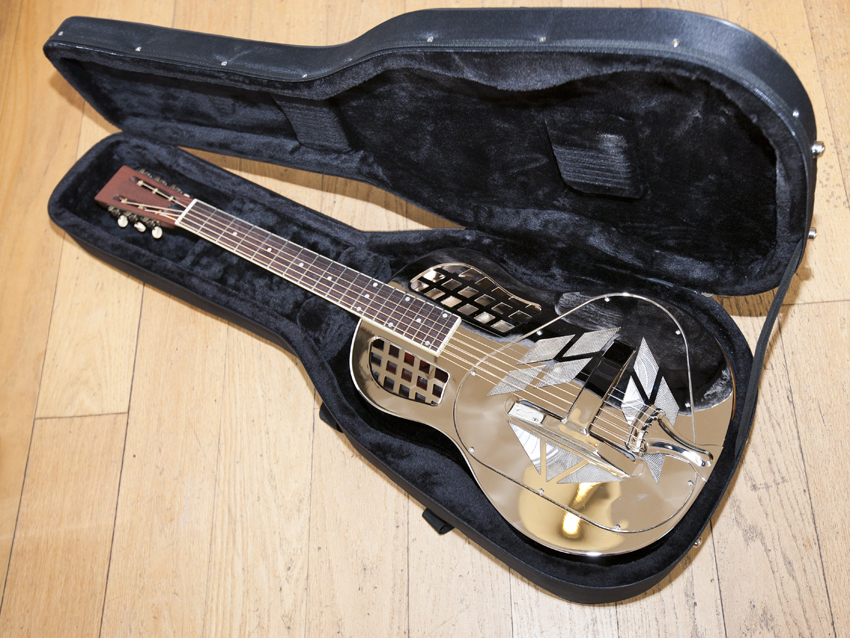
Resonators and the blues
People associate resonator guitars with blues slide guitarists – but how often did early bluesmen really use them?
“Well, you would find Tampa Red in Chicago in 1928 with a Tricone. Blind Boy Fuller, Son House, those were the sort of early players. I heard a great interview recently with Son House – it’s just turned up on the Internet. He was asked about his National steel guitar, and he said, ‘Yes, it’s brilliant: it’s rainproof. You can take them out in the rain – wooden guitars get ruined’. And that was it. He didn’t talk about the tone or anything [laughs].
“But there’s a lot of mythology attached to the blues and National guitars, and also bottleneck playing. Actually, though, surprisingly few old-time blues players used them. It’s something that happened more in the 1960s blues revival than it did in the 20s and 30s. Take three of the ultimate acoustic blues slide players of all time – and always will be – Robert Johnson, Charley Patton and Blind Willie Johnson... None of these blues players played resonators: they all played flat-top acoustics.
“Jazz players liked the round-neck models: a National was just amazing, because they’d used banjos before, in the early days: four-string banjos, for jazz. Bessie Smith and all those kind of people had a banjo in the band.
“But really, that was sort of superseded by National guitars, you know, because of the power of them and because of the harmonic advantages of six strings rather than four. It was just better.”
How long were resonators king of the hill before electrics took over?
“Resonators are the missing link between acoustic and electric, and they weren’t there for very long as a very popular design. They sort of dominated the world, I suppose, between 1928 and 33, and then it starts to go – by 1934, you’ve got National producing electric guitars. And it finished completely in the Second World War because, due to the war effort, metals were scarce, and in fact, most of the tooling was destroyed.”
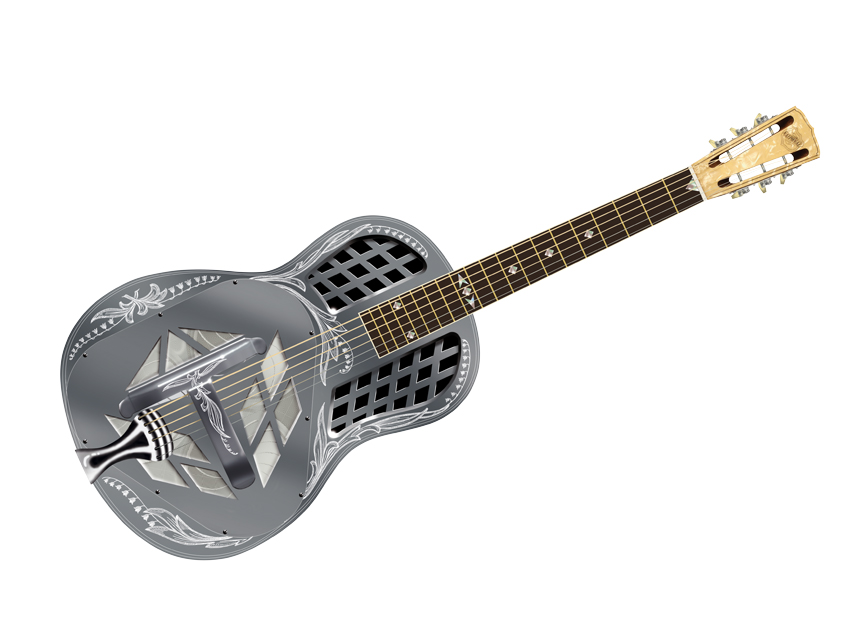
Round-neck Tricone
“The round-neck Tricone, tri-plate, whatever you want to call it, didn’t get played very much by slide players, but since the 60s, it’s become the ultimate bottleneck guitar.
"It sings and does things that no other guitar will do: it’s closer to an electric guitar with a sustain pedal on than an acoustic.”

Dobro Model 27
“This is a wood-bodied, spider-bridged, classic, basic Dobro. It launched the sound of what we know as the Dobro in country music.
It was never made for country music, it just suited it. Top country bands like, say, Roy Acuff’s band were the pop stars of the era. To have Brother Oswald in there playing Hawaiian guitar was as cool as f**k, basically.”

Steel-Bodies National Duolian
“That has to be the most iconic resonator. It’s the one that everybody perceives as the sound of the Delta blues.
"It has a Duco painted finish. Very cheaply assembled, they often had what they called an ‘ebonised’ fretboard: basically, compressed paper. They produced them very cheaply and very quickly, and they have a tone that is incredible for blues guitar. It’s very tin can-ish – and loud as hell.”

Supro Dual Tone 1957
"Moving on from the resonator era, it's also worth checking out Supro [a brand of Valco, a business founded by Louis Dopyera, Victor Smith and Al Frost] and Dual Tones: Ry Cooder had the white one.
"Ry Cooder is more associated with the Strat, as that’s more often been his slide guitar of choice – but the Dual Tone is still a pretty iconic slide guitar."

Airline Resoglas 1965
"In electrics, you've also got Supro Airlines. J B Hutto, the Chicago blues player, played one.
"Guitars such as the Resoglas don't really represent the first electric guitars used for bottleneck, but certainly Jack White made this model very popular in recent years."
The illustrations you've seen on the last few pages are from the heavyweight (3kg in fact!) book, Palm Trees, Senoritas... And Rocket Ships! by designer Mark Makin, who painstakingly drew every classic guitar from the National, Dobro, Supro, Valco and OMI guitar brands.
Michael Messer and other experts contributed insights to this Herculean tome, which is not just fit for your coffee table, but might just break it at 423 lovingly illustrated pages.
Visit the official Mark Makin website for more information.
Jamie Dickson is Editor-in-Chief of Guitarist magazine, Britain's best-selling and longest-running monthly for guitar players. He started his career at the Daily Telegraph in London, where his first assignment was interviewing blue-eyed soul legend Robert Palmer, going on to become a full-time author on music, writing for benchmark references such as 1001 Albums You Must Hear Before You Die and Dorling Kindersley's How To Play Guitar Step By Step. He joined Guitarist in 2011 and since then it has been his privilege to interview everyone from B.B. King to St. Vincent for Guitarist's readers, while sharing insights into scores of historic guitars, from Rory Gallagher's '61 Strat to the first Martin D-28 ever made.



